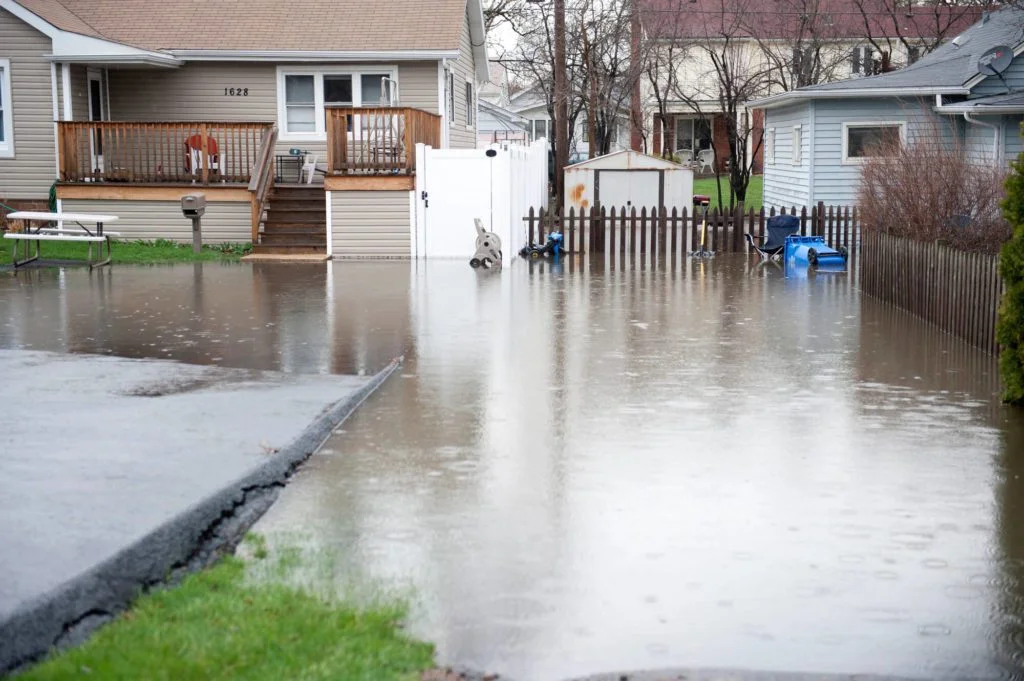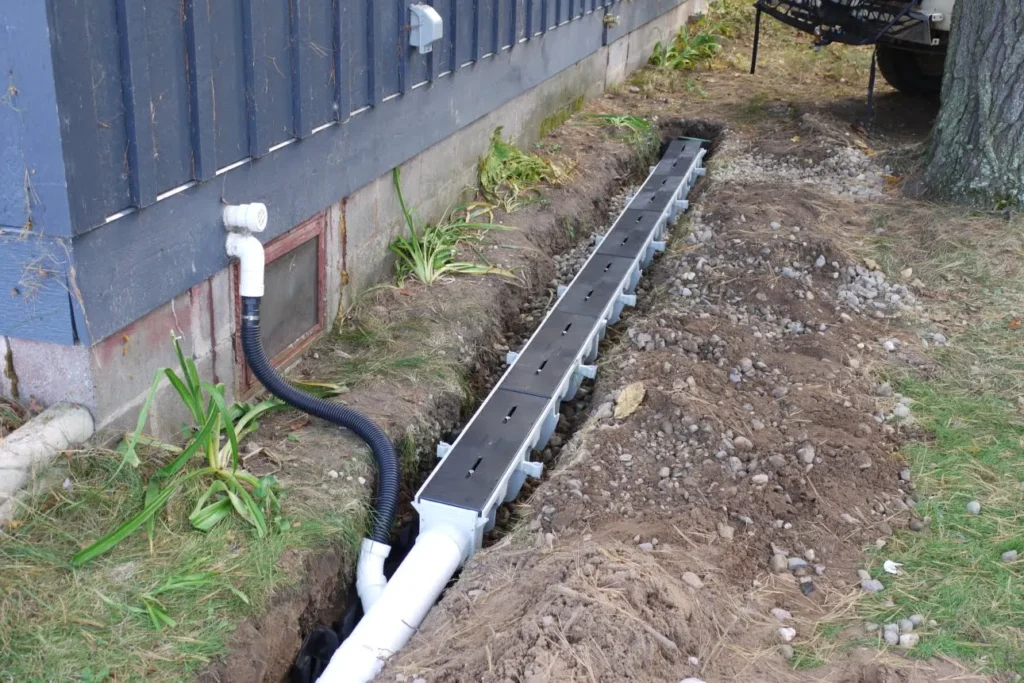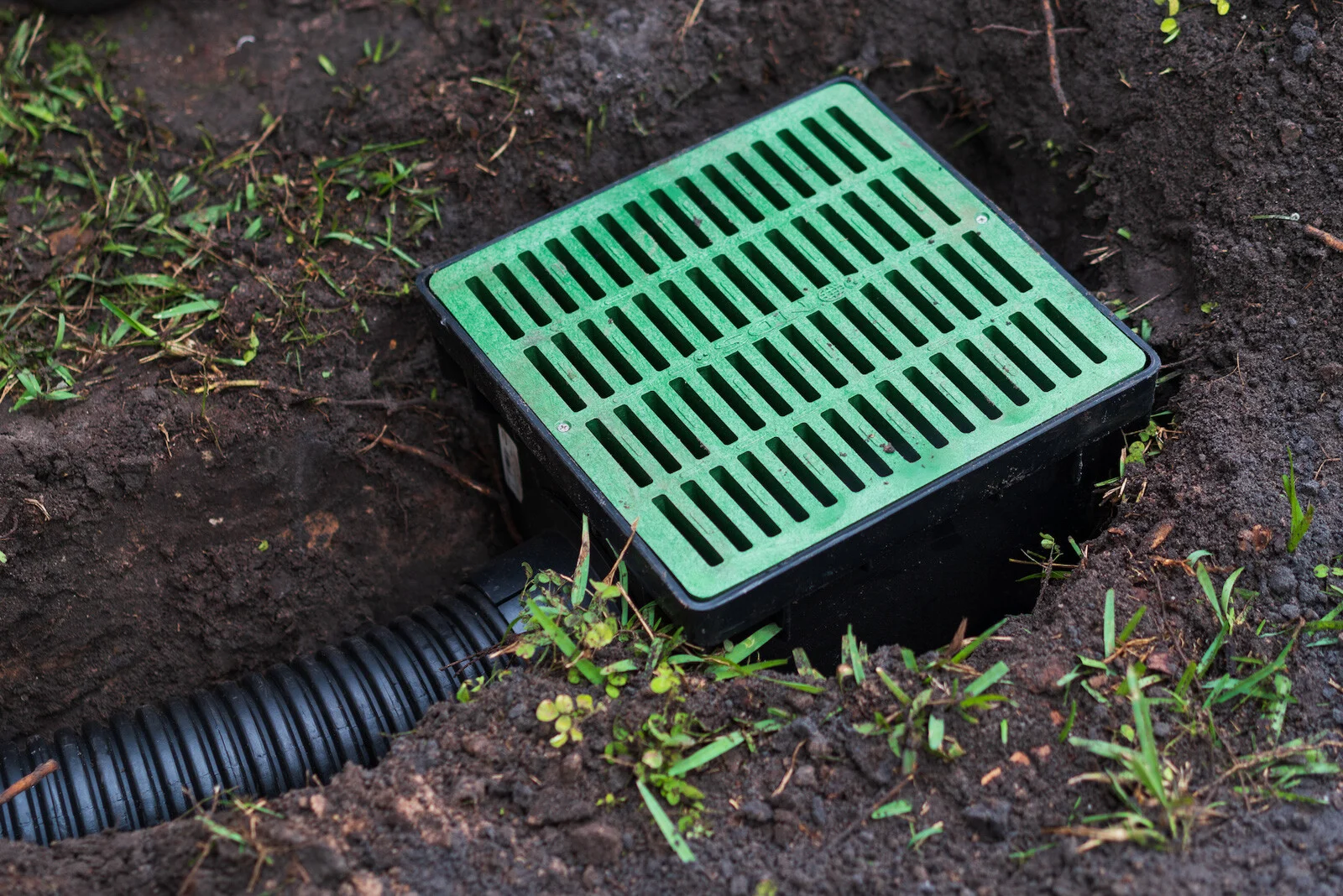Ever had that moment when you glance out after a good Aussie downpour, only to find your backyard transformed into a muddy swimming pool? Yep—where there was once lawn, now there’s slush, puddles, and a confused barbecue floating sideways. Welcome to the wild, unpredictable weather life in Orange. With around 1,100 mm of rainfall a year, a mix of clay-heavy soils, and suburban blocks that often slope like a skate ramp, drainage isn’t just an afterthought—it’s essential.
But here’s the good news: Drainage Solutions in Orange don’t need to break the bank or bulldoze your weekend. Whether you’re wrangling water pooling near the patio or noticing suspicious soggy patches around the shed, there are smarter, more affordable ways to keep things dry without calling in the SES.
In this guide, I’ll walk you through nine cost-effective, expert-approved drainage tips—the kind that save your foundation and your finances. From rain gardens that double as backyard art, to budget-friendly gravel trenches, these ideas are practical, clever, and totally doable (even if your green thumb leans more “Netflix gardener” than “DIY legend”). Let’s dig in—your gumboots will thank you later.

Why Smart Drainage Solutions in Orange Are a Game-Changer
Think of rainy days in Orange as nature’s version of a plot twist—you step outside into sunshine, and 15 minutes later, you’re ankle-deep in backyard soup. With local planners investing millions in stormwater basins and upgrades, it’s clear: flooding is a real concern. But while the council handles the big-picture stuff, your home needs its own plan.
The good news? You don’t need deep pockets or heavy machinery to protect your patch. If you’ve noticed water pooling around your foundations, lawn turning swampy, or that unmistakable musty smell indoors, you’re already seeing the signs. These are warnings that your home could be at risk of serious damage—from cracked foundations to rising damp.
That’s where smart drainage solutions in Orange come in. A few strategic changes—like adding gravel trenches, rain gardens, or keeping your gutters squeaky clean—can make a massive difference. They’re simple, cost-effective, and most importantly, they stop water from overstaying its welcome. Because let’s be real: the only time you should wear gumboots in your living room is during a flood drill. And even then… maybe not.
Tip 1: Start with a Drainage Inspection
First thing’s first: call in a pro for a thorough check-up. Think of a drainage inspection like a health check for your home – it uses cameras to find hidden trouble (cracks, clogs, or tree roots) before they blow up into major repairs. I learned this the hard way: my friend’s yard kept flooding every winter until a camera showed a collapsed pipe under the soil. Regular inspections (say every few years) can catch these issues early and save thousands in fix-ups. Plus, walking your property with an expert can reveal subtle slopes or low spots you might miss. In short, a little prevention (and a bit of camera magic) means long-term peace of mind.
Tip 2: Choose Gravel-Filled Trenches Wisely
Got a soggy patch under the eaves or along a fence? A gravel-filled trench – aka a French drain – can do wonders. It’s basically a trench lined with gravel and a perforated pipe that lets water flow away from trouble spots. These drains are super cost-effective: the materials (gravel and pipe) are cheap and installation is straightforward. Once in, they typically last decades with minimal maintenance (unlike, say, mechanical pumps). To illustrate, here’s a quick compare-and-contrast:
| Material Type | Initial Cost | Lifespan | Maintenance |
| Gravel | Low | High | Minimal |
| Concrete | High | High | Moderate |
Gravel keeps rain moving and needs almost no upkeep. Concrete channels or pipes can do the job too, but they’re usually pricier to install. (Think heavy machinery and permits!) Gravel trenches, on the other hand, are DIY-friendly. The kicker? If your neighbor asks about your clever fix, just wink and say, “I love my gravel, it’s the bedrock of good drainage!”
Tip 3: Install Simple Rain Gardens
Rather than letting roof runoff flood your lawn, plant it a garden! A rain garden is simply a shallow, planted depression that captures stormwater and lets it soak away slowly. Fill it with deep-rooted native plants and tidy gravel – it becomes a pretty sponge. During heavy rain, the garden temporarily holds water and gives it time to sink into the ground. This not only cuts runoff volume but even filters out pollutants in the process. Imagine turning that worst flood spot into a mini-wildflower meadow! For example, a handful of strappy grasses or rushes will happily gulp excess water, and your soil stays intact instead of washing away. Best of all, once the storm passes, your rain garden looks great and may even attract butterflies. It’s a win-win: beauty and brains. (Note: include an overflow outlet or a hidden pipe for really big rains, so your garden doesn’t turn into a pond.)
Tip 4: Opt for Permeable Paving
Want your driveway or patio to be both stylish and functional? Go permeable. Modern permeable pavers (or porous concrete) let rainwater trickle right through instead of puddling on the surface. In practice, this means less runoff chasing its way into drains and more water replenishing the underground water table. It’s not only environmentally savvy but also safety-smart: wetter weather means better traction and less ice forming on porous surfaces. From an aesthetic angle, there are plenty of sleek patterns and colours available. Picture a chic courtyard that swallows rain and drains quietly beneath – your neighbours will be asking for tips over the fence. Plus, designers note that permeable driveway installations can boost property value and curb appeal. In short, these pavers let rain go where it should (into the ground) without sacrificing style. Your home will stay dry, your plants will cheer, and you’ll keep that stylish edge. Win-win.
Tip 5: Keep Your Gutters and Downpipes Clear
This one’s almost too simple: clean your gutters! Gutters are your first line of defense, channelling roof runoff safely away from walls and foundations. But when they clog with leaves and debris, even a little rain can cause big headaches. As one insurance blog warns, “even a little bit of water can cause a lot of damage” if it isn’t directed away. Clogged gutters mean water spills over, down your walls, and pools at the base. That pooling erodes soil and can crack your foundation – a costly headache. Regular DIY checks will save you. Here’s a quick gutter checklist to keep dry:
- Clear debris twice a year. Leaf piles turn to rot fast; scoop them out in spring and autumn.
- Install gutter guards. Simple mesh covers let water in but keep twigs out.
- Check after storms. Heavy winds can clog gutters overnight; a quick clean-up prevents tomorrow’s leaks.
Make it a routine: climb the ladder (safely!) and clear or flush the gutters. It’s cheap, quick, and pays for itself by preventing water damage later. Plus, nothing beats the peace of mind of watching a downpour flow off your roof – outside, not inside.
Tip 6: French Drains Can Be a Game-Changer
If you have a sloping yard or a spot where water loves to puddle, a French drain is your secret weapon. It’s essentially a gravel trench with a perforated pipe laid beneath, which quietly redirects subsurface water away to a safe outlet. French drains shine in yards with gentle slopes or behind retaining walls. They work “below the surface” to grab excess moisture before it ruins your lawn or creeps toward the house. The magic part? They’re one of the most cost-effective fixes around. A pro can install one fairly quickly (or savvy DIYers can tackle it on a weekend), and once it’s done, it requires very little upkeep. Think of it as an underground highway for water: slow it’s going out of the way, but it’s tough to stop. In practice, a well-built French drain can last 30+ years without fuss. So if you’re noticing soggy spots that never dry, consider laying a French drain – your foundation (and your gardening reputation) will thank you.

Tip 7: Plan Strategic Landscaping
Smart planting turns plants into partners for drainage. Choose Aussie natives and moisture-loving species that will gulp up excess water before it pools. For example, Callistemons (bottlebrush) and melaleucas thrive in wet conditions; their roots drink up rainfall and their woody stems brighten up the garden. Swamp banksia (Banksia robur), pictured below, is literally built for boggy soils. Grasses and rushes (think kangaroo grass or lomandra) also make great borders along low spots – they soak moisture like champs. In general, aim to “plant downhill”: put thirsty shrubs and trees where water collects, and let sun-loving, drought-tolerant species sit on the slopes where soil drains quickly. This way, your garden helps you drain. (Bonus: natives are low-maintenance and look uniquely Orange–regional, so your yard will be both practical and picturesque.)
On the right, Banksia robur (Swamp Banksia) shows off bright blooms – it loves wet feet, making it perfect for damp corners. Its tough root system helps draw down soil moisture, a natural drainage boost. In short, turn your plants into mini pumps and you’ll never curse puddles again.
Tip 8: Combine Drainage with Rainwater Harvesting
Why just drain water away when you can use it? A rainwater tank (or even a simple barrel) under your downpipe solves two problems at once. Instead of rushing stormwater off the property, you store it for later – say, watering the garden or washing the car. This clever hack literally pays for itself: every litre you catch is a litre you don’t buy from the tap. Experts estimate that rainwater harvesting systems can cut flood damage and stormwater infrastructure costs by “millions” over time, which is why councils like Orange City Council continue to invest in smarter stormwater management systems. In practice, having a tank means “storing water, rather than it being runoff into the system”. Less runoff means less strain on drains during big storms, and more savings for you. It’s the ultimate two-for-one: solve a drainage issue and slash your water bills. Plus, when restrictions hit or taps run dry, you’ll be sipping from your own backyard reservoir. Practical and satisfying!
Tip 9: Work with Local Drainage Experts
Sometimes the smartest way to save is knowing when to call in the pros. Local Orange specialists have seen every tricky yard (and Orange’s unique clay soils) and can design custom fixes you might not think of. They can do a precise survey, consider property shape and soil, and install the right drains or pipes without guesswork. Sure, it’s another expense – but often it costs less in the long run than trial-and-error DIY. As one planner quips, “Tailored solutions always pay off in Orange’s diverse conditions.” In other words, an expert’s advice can ensure you get the right drainage solutions in Orange that fit your budget and problem. So if your head’s spinning at rainwater charts or pipe sizes, pick up the phone. A short consult might lead to big savings and give you confidence that your home will stay bone-dry, whatever the next storm throws at it.
Quick Answers About Drainage Solutions in Orange
How do I know if I need drainage solutions in Orange?
If you see puddles forming in your garden after rain, soggy patches that linger, or any mold or damp spots near foundations, it’s time to act. Experts note that unusually lush grass or sunken areas often mean hidden leaks or poor flow, and persistent puddles mean water isn’t being sent away properly. In short: if your yard looks like a pond after a shower, consult a drainage pro.
What’s the cheapest way to improve drainage?
Simple DIY fixes can work wonders. For example, adding gravel trenches (French drains) or planting a rain garden are very affordable and effective. These solutions use low-cost materials and require little maintenance. Always start with a quick professional inspection – catching issues early is the best way to avoid expensive repairs later.
Can poor drainage damage my home’s foundation?
Yes. Water pooling around the base of a house can erode soil and cause foundation settling or cracks. Continuous moisture on walls or slabs also invites rot and mold. In other words, untreated runoff is a serious threat to structural health over time, so it’s important to channel water away correctly.
Conclusion
Drainage issues don’t have to sink your savings. With a little smarts and sweat (and maybe some help), you can turn tricky water woes into a manageable part of life in Orange. From professional inspections to DIY gardens and drains, the key is to start simple and catch problems early. I’ve seen these small changes make a huge difference – your backyard can go from swamp to safe haven, and your wallet will thank you. So grab that garden fork (or contractor’s number) and take stock of your yard today. With the right approach, you’ll find that drainage solutions in Orange don’t have to cost a fortune. Here’s to staying dry, prepared, and enjoying every season under the Southern sky!

